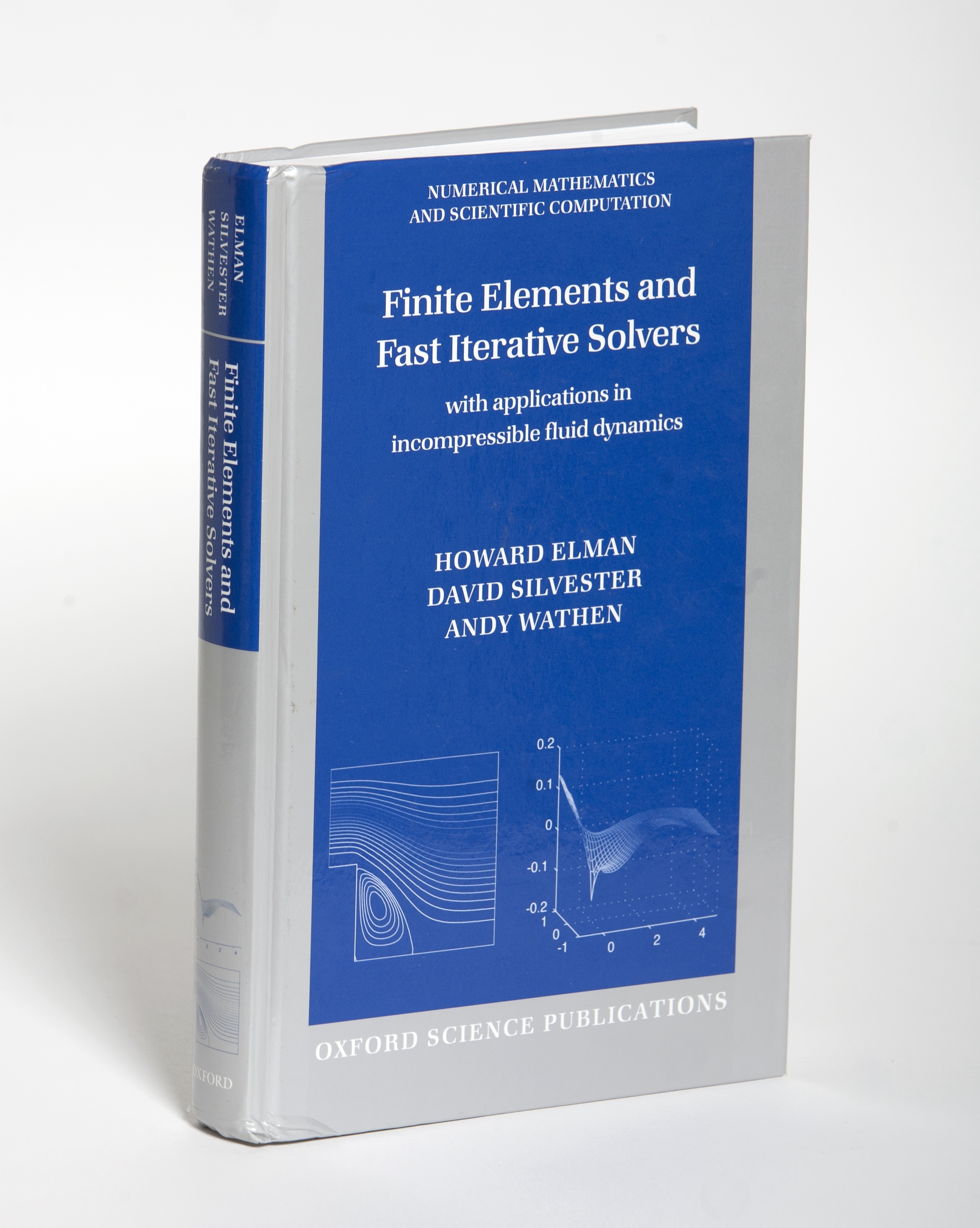
For Howard Elman, research is a collaborative experience—one that can produce scientific discoveries that are far greater than the sum of their parts.
A professor of computer science with an appointment in the University of Maryland Institute for Advanced Computer Studies (UMIACS), Elman has spent the past 40 years working with researchers around the world on complex problems like developing faster code for studying fluid dynamics and reactive flows.
Reflecting on his career as he prepares to retire from the University of Maryland at the end of June, Elman says it is these types of collaborative relationships—both with other researchers and with his students—that he values most.
He recalls a conversation he had several years ago with Andrew J. Wathen, a book co-author who was retiring from Oxford University. “I called to congratulate him and tell him how great it had been to work together,” Elman says. “He told me that we accomplished much more together than we could have done separately.”
Elman came to UMD in 1985 and has been affiliated with UMIACS since 1987, including a two-year stint as the institute’s interim director from 1999–2000. He has long emphasized the fundamental connection between computer science and applied mathematics.
Initially starting his academic career studying pure mathematics at Columbia University, he soon realized his passion lay with the application of mathematics in computer science, prompting him to switch his Ph.D. focus at Yale to computer science. This overlap, whereby computational methods are used to solve mathematical models, is embodied in the field of scientific computing.
According to Elman, many real-world problems are modeled using math equations, but these equations are often too difficult to solve just by analytical techniques. With scientific computing, researchers can use computers to find solutions to complex math problems. Together, these disciplines can help scientists understand complex phenomena such as the behavior of sound waves, the strength and stability of buildings, and how water or air flows.
“For example, the lift and drag of an airplane when flying can be modeled by an equation, and you can solve those equations using computational methods,” Elman explains.
 Elman says one of his proudest achievements is the book he co-authored with Wathen and David Silvester, Finite Elements and Fast Iterative Solvers.
Elman says one of his proudest achievements is the book he co-authored with Wathen and David Silvester, Finite Elements and Fast Iterative Solvers.
The idea for the book emerged during Elman’s first sabbatical in England, when he and his co-authors realized there was a gap within the niche of fluid dynamics that hadn’t been addressed yet. They combined two essential aspects of scientific computing—the accuracy of approximations in fluid dynamics equations and the efficiency of computational algorithms in solving these equations.
More than 20 years later, the book is still widely cited, highlighting the lasting significance of their work.
Elman has also been passionate about promoting collaboration between UMD’s computer science and applied mathematics programs. He recognized that the faculty from both programs had strengths that they could lend to each other.
He actively promoted collaboration between the two disciplines during his stint as director of the Applied Mathematics & Statistics, and Scientific Computing (AMSC) Program from 2018–2024.
“Today, the second largest number of faculty affiliated with the AMSC, and it’s actually quite close, comes from the computer science department,” Elman says. “And a lot of these people joined during my time—in part, because I encouraged them to.”
In addition to his research and administrative roles, Elman has kept a busy teaching schedule over the years and has mentored and advised dozens of graduate students.
“Working with students has been a fantastic experience,” he says. “One of the high points of my time at the University of Maryland was developing a rapport with a student, where you guide them, but they really do the hard work—it’s their thesis.”
Having been an integral part of UMIACS since soon after it was launched, Elman has witnessed its evolution through numerous computing revolutions—from the advent of parallel computing to today’s artificial intelligence boom.
“UMIACS has always been at the center of it all,” Elman says, with the institute providing state-of-the-art computing resources to researchers—access they could not have done without. This supportive role has allowed UMIACS to develop strong connections with departments across campus, Elman notes, ranging from linguistics to the business school, to electrical and computer engineering.
Elman has also seen the fields of computer science and applied mathematics transform at UMD. He highlights a rising demand from graduate students to explore big data and machine learning but emphasizes the importance of maintaining a balance between classical principles and new advancements.
“Although investing in exciting innovations is crucial, we also need to remember where we came from and keep that in our purview as well,” he says.
Elman expresses much gratitude for his time spent at UMD. “I've always felt that I lucked out to come to this institution,” he says. “It’s strong, it’s public, and it was the perfect place for me.”
—Story by Aleena Haroon, UMIACS communications group